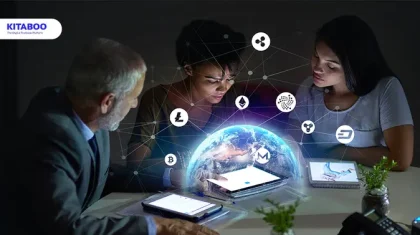
How Augmented Reality Can Improve Kids’ Imagination?
Summarize this blog with your favorite AI:
Augmented Reality (AR) is a technology that superimposes computer-generated images, audio/videos and other types of media to enhance one’s view of the real world. The success of Pokémon Go, an Augmented Reality game to catch virtual creatures, pointed to the immense potential of this new-age technology in capturing the attention of both the young and adults alike.
In the context of education, and more so in case of kids’ education, Augmented Reality can be used to stimulate the imagination, hone analytical skills, add context to the subject under study and make studies more interesting.
Here are some ideas on how AR in education can improve kids’ imagination.
1. Immersive learning:
AR finds great use in teaching mathematics, especially geometry. For example, a teacher may want to teach about different geometrical shapes. Students are most likely to be familiar with shapes, such as square, rectangle, triangle, and circle. However, going beyond these, the less familiar shapes, such as a hexagon, parallelogram, and polygon, can be taught through 3D models. Then again, the lesson can have links to real-life examples, such as buildings in which these shapes have been used. This would aid the students’ learning process and make it more engaging and immersive.
2. Learning by doing:
It goes without saying that learning by doing provides the best learning outcomes. Augmented Reality provides various opportunities for stimulating children’s imagination. It motivates them to actively participate in the learning process rather than just being a passive listener sponging up knowledge.
A teacher may wish to teach students about India’s capital Delhi. On the classroom display board, the instructor can put up some ‘trigger’ images, for example, various heritage sites. Each child or a group of children can be assigned one image which they can look up on their smartphones or computer and find information related to that site.
The information can be shared with the class by the group. Such activities can motivate students to find interesting nuggets about the subject under study. Also, since they have put in the effort to search for information and glean through it, they are more likely to retain it for a long period.
3. Contextual learning:
In the conventional classroom teachers use 3D models to explain a subject to students. However, in a non-conventional classroom AR can provide more information than just explaining. Take biology class as an example.
While teaching human anatomy, the teacher can divide the class into groups and each group can be given a section to examine. The teacher can show various lifelike 3D models on the projector screen, where students can see the blood in circulation or the food being digested. With AR, students can in a way see all that goes on within the body.
This helps to add context and relevance to the subject under study. Similarly, several museums and historical sites have already added used AR technology to provide audio/video guided tours of their collections or places. Through a simulated environment, Augmented Reality can ‘transport’ the students to the place understudy for a first-hand experience.
4. Make homework interesting:
Teachers can also explore AR opportunities to make homework more interesting and engaging for the students. For example, for homework, students can be provided AR-printable worksheets which blend printable materials, such as PDFs with virtual elements. Students just have to point their mobile devices at the printed worksheet to pull out the corresponding digital element. Thus, AR can help to foster a positive relationship between education and technology.
In conclusion:
Augmented Reality uses simulations to create an enhanced version of what one sees, hears, feels, and smells. For young learners, AR can create an immersive and interactive experience extending their learning to a multi-sensory experience. Augmented Reality solutions are transforming education. Moving forward, more schools and higher education institutes are likely to open their doors to Augmented Reality. And the opportunities that it provides in stimulating children’s imagination.
Discover how a mobile-first training platform can help your organization.
KITABOO is a cloud-based platform to create, deliver & track mobile-first interactive training content.


